As we motored across Aylmer Lake in the far north of the Northwest Territories, guide Kevin McNeil touched me on my shoulder.
“Do you have bigger flies?”
Aylmer’s storied tundra lake trout were giving us a bit of a struggle, given our limited supply of streamers. As is usual, I meant to devote a couple of evenings prior to my departure to Yellowknife to tying up big lake-trout streamers – massive hunks of imitation protein that big predators just can’t ignore.
And, as per usual, I never found the time. Something else always seemed more pressing. More important. Now, with only a few lakers to the boat and having gone through a smorgasbord of fly patterns — I even raided my pike box, and there are no pike in Aylmer Lake — I was kicking myself. But all was not lost. A few days back, as I finished packing, I realized I had an extra pound or two of room in my traveling duffel. After a critical look around my office, I tossed in an old travel vise and plastic baggie full of basic tying materials.
“I don’t,” I told Kevin. “But I will tomorrow.”
Do you travel with a vise?
I don’t always travel with a vise and tying materials. Frankly, it’s a hassle. In fact, I would say that 75 percent of the time, I just wing it with the flies I have on hand, or I make the time to tie before I travel.
But there are times like these, when I’m not entirely certain what I’m getting myself into. Patterns and sizes are generally understood. But sometimes, like this day in particular, the fish just want something else. And it sucks to not have what you need.
So I felt good about my choice to grab the vise and the materials at the last second. It likely made the fishing better, and it sure helped with the confidence – with three more days of fishing ahead of us, having the right flies proved to be important.
When to pack the vise
Generally speaking, if you can tie flies, and you’re headed to a remote lodge where the fish are new to you, packing the vise is a good idea. It helps, too, when you’re somewhere far away from the nearest fly shop or the lodge might not prioritize fly fishing and offer precious few options when it comes to flies.
For some anglers, tying flies at a legit fishing lodge – be it a Bahamian retreat somewhere in the Family Islands or a distant northwoods camp on the shores of a Canadian lake – is part of the experience. And if you love it, and you have room in your travel bag, pack it.
Obviously, you’ll need to load it into a checked bag. Things like scissors and weird vials of tacky liquid, sharp hooks and the like tend to pique the interest of the security officer with their eyes glued to the x-ray machine. So, don’t pack the good stuff. Just a simple travel vise is the way to go. If you tie flies and travel, a travel vise is a logical possession.
In situations like mine, having the vise on hand at Aylmer Lake was vital. The lodge does cater to fly anglers, but not primarily, and the selection of flies on hand can sometimes be limited. So being able to craft a few flies after being told the flies I brought were on the small side felt pretty good.
When to leave it home
For a lot of traveling anglers, fitting everything into a travel duffel is a real science. And, when fitting something in that’s not absolutely necessary might jeopardize the weight limit of your bag, a tying vise and tying materials are often the first to be left home. It also pays to check in with the lodge you’re visiting to see if they provide a vise and tying table. Many lodges do, in which case you can take only tying materials and leave the vise behind.
Chances are, if you’re headed to a lodge that caters solely to fly fishers, you’ll likely be just fine showing up with the flies you have on hand. Most fly fishing lodges either have flies to purchase or an excellent selection of guide flies that just magically appear (hint: this is just one of the things we tip for, folks).
And, if tying is a chore, or you’d rather spend your mornings chatting fishing over coffee with fellow anglers, or your evenings sipping whiskey and sharing good stories, don’t burden yourself. The whole purpose of traveling to fish is to enjoy the experience, so don’t add something to your itinerary that might detract from your good time.
When it pays off
The next morning, after dialing the color of the patterns the lakers were after, I showed up at the boat with a handful of long, heavy streamers. Kevin nodded approvingly.
“Bigger is better,” he said.
For me, it’s not a chore to pack a vise. But it’s also not my first preference, either. In instances like this, though, I just feel better having the ability to craft a few flies that will enrich my experience.
The bottom line? It’s up to you, and it should completely depend on your circumstances. If you think you might need flies, you should probably pack it. Because when the guide looks at you, and then at your flies, you want to see a look of confidence in return.
There may be nothing more disheartening, 250 miles from the nearest road and a two-hour float-plane ride from anything resembling civilization, to hear your guide say, “Well, I guess this’ll work. But you really need something bigger.”




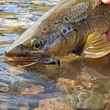


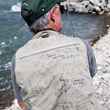

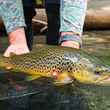


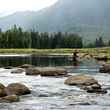
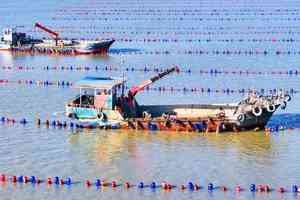
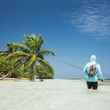


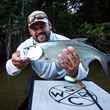


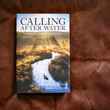
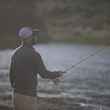

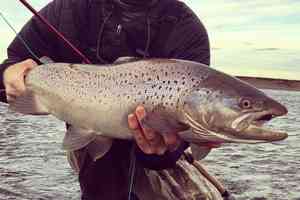
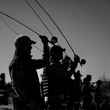
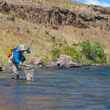

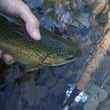
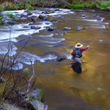

Comments